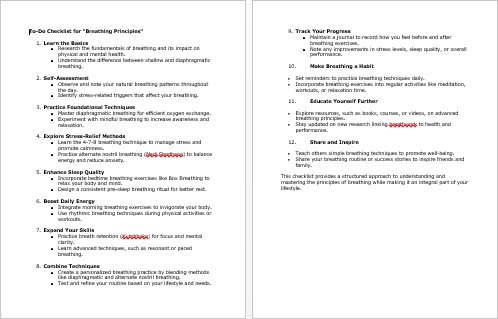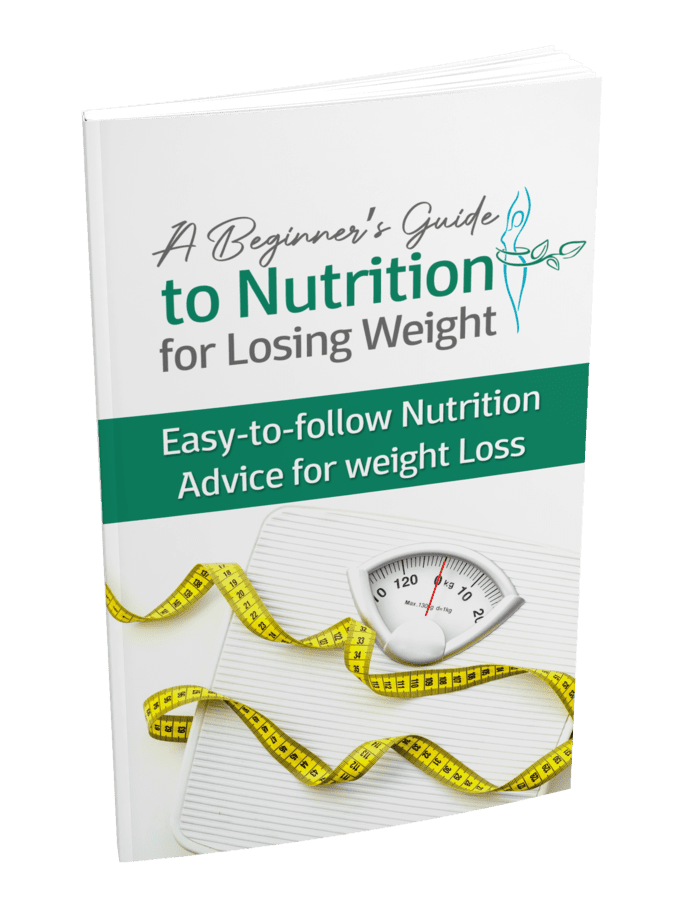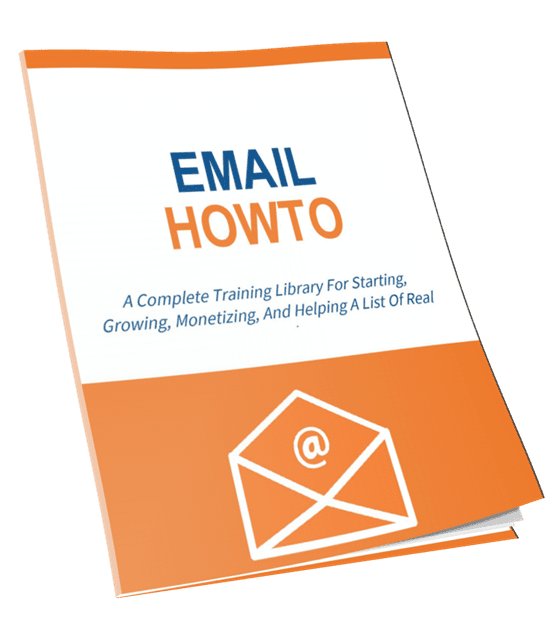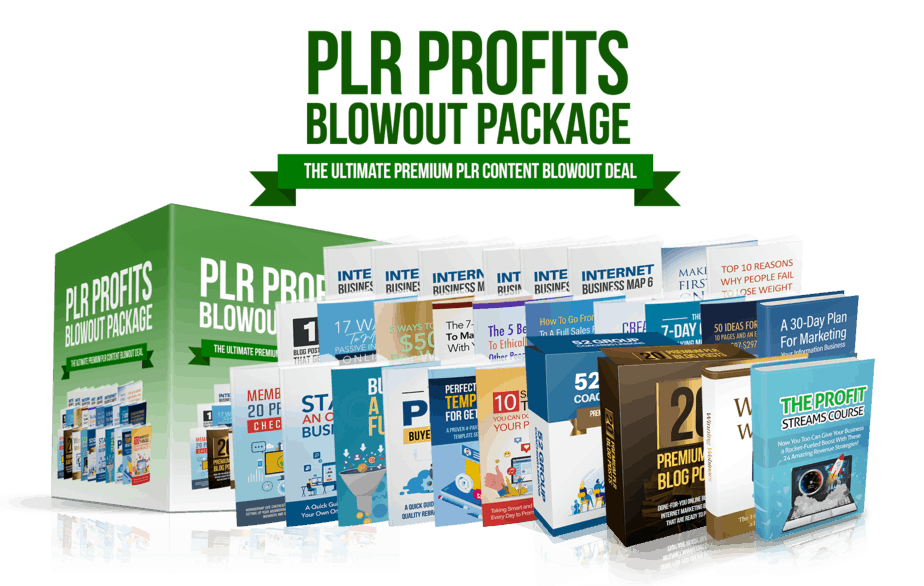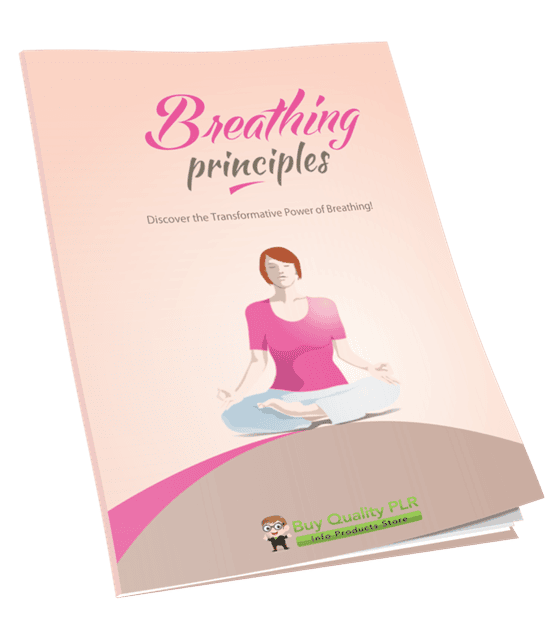
Breathing Principles PLR Course 21k Words
in Health PLR , Health PLR eBooks , PLR Checklists , PLR eBooks , PLR eCourses , PLR List Building Reports , Premium PLR , Premium PLR eBooks , Premium PLR Reports , Premium White Label Brandable PLR Coaching Courses , Private Label Rights Products , Self Improvement PLR , Self Improvement PLR EbooksChoose Your Desired Option(s)
has been added to your cart!
have been added to your cart!
#breathingprinciples #mindfulbreathing #plrcourse #relaxationtechniques #healthandwellness #stressrelief #breathingexercises #wellnesscontent #plrcontent
Discover the Transformative Power of Breathing!
Are you ready to unlock the secrets to better health, reduced stress, and enhanced mindfulness? The “Breathing Principles PLR Course” is your ultimate guide to mastering the art of conscious breathing. With step-by-step lessons and proven techniques, this course empowers you to take control of your breath and transform your well-being.
Whether you want to improve your focus, reduce anxiety, or optimize your performance, this comprehensive course has you covered.
Presenting…
Breathing Principles PLR Course 21k Words
What You’ll Learn in the Course
Module 1: Understanding the Basics of Breathing
Dive into the science of breathing and understand why it’s key to a healthy life.
- The Science of Breathing: Learn how your respiratory system works and its role in overall health.
- The Breath-Body Connection: Discover how breathing impacts your energy, emotions, and stress levels.
- Self-Assessment of Breathing Patterns: Evaluate your current breathing habits with a guided exercise.
- Introduction to Conscious Breathing: Explore mindful breathing and its power to enhance relaxation and focus.
Module 2: Mastering Diaphragmatic Breathing
Harness the benefits of diaphragmatic (belly) breathing to improve your physical and mental health.
- What is Diaphragmatic Breathing? Understand its role in effective oxygen flow.
- Practicing Deep Breathing: Master this essential technique for stress relief and lung capacity.
- Benefits of Diaphragmatic Breathing: Discover how it enhances relaxation and overall vitality.
- Incorporating It Into Daily Life: Learn practical ways to apply this technique during work, exercise, or leisure.
Module 3: Techniques for Stress Management
Master breathing techniques to stay calm and centered, even in the face of stress.
- Recognizing Stress Triggers: Understand how stress affects your breathing patterns.
- 4-7-8 Breathing Technique: Learn this quick and effective method for immediate relaxation.
- Alternate Nostril Breathing: Explore this ancient practice to balance your mind and energy.
- Designing a Stress-Relief Routine: Create a personalized plan to manage stress effortlessly.
Module 4: Breathing for Better Sleep and Energy
Transform your sleep quality and energy levels with targeted breathing practices.
- Breathing for Sleep: Discover how proper breathing promotes deep, restorative rest.
- Box Breathing Technique: Practice this structured method to relax your mind before bed.
- Morning Breathing Exercises: Start your day with energizing breathwork to boost focus and clarity.
- Bedtime Breathing Ritual: Develop a calming routine for better sleep every night.
Module 5: Advanced Breathing Practices
Explore advanced techniques to deepen mindfulness and enhance performance.
- Breath Awareness Meditation: Cultivate mindfulness by observing your natural breath.
- The Power of Breath Retention: Learn controlled holds to sharpen focus and mental clarity.
- Boosting Performance Through Breathing: Use breath control to excel in physical and mental tasks.
- Combining Techniques: Create a custom practice combining all the techniques learned in the course.
Who Is This Course For?
This course is perfect for:
- Wellness Coaches and Trainers: Offer this course to your clients as part of your program.
- Content Creators: Resell or repurpose the content to grow your brand and audience.
- Healthcare Professionals: Educate patients on the health benefits of proper breathing.
- Individuals Seeking Personal Growth: Learn how to use breathing to reduce stress, improve focus, and live better.
What’s Included in the PLR Course Package?
- Breathing Principles PLR Course (19,320 words): Comprehensive modules covering basic to advanced breathing techniques.
- Checklist (337 words): A step-by-step guide to track and implement breathing practices.
- FAQs (886 words): Expert answers to common questions about breathing techniques.
- Professionally Written Sales Page (600 words): Ready-to-use sales copy to help you promote the course immediately.
How to Profit from This PLR Product
Here’s how you can monetize the “Breathing Principles PLR Course”:
- Sell It as a Complete Course
Offer it as a premium product for $47–$97 and help others achieve wellness while earning income. - Bundle It with Complementary Products
Combine it with yoga, meditation, or fitness courses for a high-value package. - Use It as Membership Content
Add it to a subscription site to provide exclusive value and generate recurring revenue. - Create Smaller Products
Break it down into eBooks, guides, or blog series to attract and engage your audience. - Repurpose for Workshops and Seminars
Use the course material to create workshops or webinars, positioning yourself as an expert. - Leverage It as a Lead Magnet
Offer sections of the course for free to build your email list and establish trust.
Why Choose This PLR Course?
- High-Quality Content: Thoroughly researched, expertly written, and easy to customize.
- Evergreen Topic: Breathing techniques are timeless and universally relevant.
- Ready to Use: Minimal editing required—start selling or using it right away.
- Flexible Licensing: Edit, rebrand, and sell the course as your own with confidence.
Special Launch Price: Only $14.99!
Take advantage of this incredible opportunity to own a high-quality PLR product on a popular and impactful topic. Help others transform their lives while building your brand and revenue.
has been added to your cart!
have been added to your cart!
Here A Sample of Breathing Principles PLR Course
Welcome to the “Breathing Principles” course! This training is designed to help you unlock the power of your breath to enhance your physical, mental, and emotional well-being. Through five engaging modules, you’ll learn the key principles of breathing, how to apply them in your everyday life, and how they can improve your overall health. Whether you’re looking to reduce stress, improve your performance, or relax better, this course will guide you step-by-step. Let’s dive in!
Module 1: Understanding the Basics of Breathing
Step 1: The Science of Breathing
Learn How Your Respiratory System Works and Why Breathing is Crucial for Physical and Mental Health
Overview
Breathing is a natural process that we often take for granted, yet it is vital for our survival and well-being. Understanding the science behind breathing can help course creators deliver a well-rounded, impactful curriculum that connects with an international audience. This step explores the anatomy of the respiratory system, the physiology of breathing, and its importance for both physical and mental health.
Detailed, Step-by-Step Instructions
1. Understand the Anatomy of the Respiratory System
a. Nasal and Oral Cavities
– Air enters the body through the nose and mouth.
– The nasal cavity filters, warms, and moistens the air, while the mouth provides an alternate pathway during strenuous activity.
b. The Trachea and Bronchi
– The trachea (windpipe) serves as the main airway, splitting into two bronchi leading to each lung.
– The bronchi branch into smaller tubes called bronchioles, forming a tree-like structure.
c. Lungs and Alveoli
– The lungs house millions of alveoli, tiny sacs where oxygen and carbon dioxide are exchanged with the blood.
– These structures are surrounded by capillaries that facilitate gas exchange.
d. Diaphragm and Intercostal Muscles
– The diaphragm, a dome-shaped muscle below the lungs, and intercostal muscles between the ribs control the mechanical aspect of breathing.
2. The Physiology of Breathing
a. Inhalation
– The diaphragm contracts and flattens, increasing the volume of the chest cavity.
– This creates a negative pressure that pulls air into the lungs.
b. Oxygen Transport
– Oxygen from the inhaled air diffuses into the bloodstream via the alveoli.
– It binds to hemoglobin in red blood cells and is transported to tissues throughout the body.
c. Exhalation
– The diaphragm relaxes, and the chest cavity decreases in volume.
– Carbon dioxide, a waste product of metabolism, is expelled from the lungs.
3. Why Breathing is Crucial for Physical Health
a. Oxygen Delivery
– Oxygen is essential for cellular respiration, the process by which cells produce energy.
– Proper oxygen levels enhance physical performance, energy, and endurance.
b. Detoxification
– Breathing helps remove carbon dioxide and other metabolic waste products from the body.
c. Regulation of Blood pH
– Breathing controls the levels of carbon dioxide in the blood, maintaining a stable pH balance.
– Proper pH is critical for enzyme activity and overall cellular function.
4. Why Breathing is Crucial for Mental Health
a. Stress Reduction
– Slow, deep breathing activates the parasympathetic nervous system, reducing stress and promoting relaxation.
b. Improved Focus and Clarity
– Controlled breathing techniques, such as diaphragmatic breathing, can increase oxygen supply to the brain, enhancing cognitive function.
c. Emotional Regulation
– Breathing patterns are directly linked to emotional states.
– Practicing mindfulness through breathing can help manage anxiety, anger, and depression.
5. Practical Applications for Course Creators
a. Incorporating Breathing Exercises
– Introduce diaphragmatic breathing or alternate nostril breathing in your lessons.
– Demonstrate techniques using clear instructions and visual aids to accommodate international learners.
b. Linking Breathing to Course Themes
– Connect the science of breathing to course topics like stress management, meditation, or physical health.
– Use culturally inclusive examples and case studies to resonate with diverse audiences.
c. Promoting Engagement
– Encourage learners to share their experiences with breathing techniques in group discussions or assignments.
– Provide resources like guided audio or video exercises for independent practice.
6. Conclusion
Breathing is more than a mechanical process; it is a gateway to improved health and well-being. By understanding the science of breathing and its applications, course creators can empower their audience to harness this simple yet profound tool. Focus on delivering clear, accessible, and evidence-based content that resonates across cultural boundaries.
By following these steps, you can effectively teach the science of breathing in a way that engages and benefits learners worldwide.
Step 2: The Breath-Body Connection
Discover How Breathing Affects Your Energy Levels, Emotions, and Stress Response
Overview
The way we breathe has a profound impact on our physical and emotional state. Understanding the breath-body connection allows you to explore how breathing can influence energy levels, regulate emotions, and manage stress. This knowledge can be transformative for international course creators looking to incorporate breathwork into their curriculum, helping learners unlock a deeper connection with their own bodies and minds.
Detailed, Step-by-Step Instructions
1. The Role of Breathing in Energy Regulation
a. Oxygen as Fuel for the Body
– Every breath delivers oxygen to the bloodstream, which fuels cellular processes.
– Efficient breathing improves oxygen delivery, enhancing energy production and physical performance.
b. Impact of Shallow vs. Deep Breathing
– Shallow breathing (chest breathing) limits oxygen intake, leading to fatigue and sluggishness.
– Deep breathing (diaphragmatic breathing) maximizes oxygen absorption, boosting energy levels.
c. Breathing Exercises to Energize
– Technique: Energizing Breath
– Inhale deeply through your nose for 4 counts.
– Hold your breath for 2 counts.
– Exhale forcefully through your mouth for 4 counts.
– Repeat for 1–2 minutes to feel invigorated.
2. Breathing and Emotional Regulation
a. How Breathing Influences Emotions
– Emotional states directly impact breathing patterns. For instance, anxiety often leads to rapid, shallow breaths, while relaxation encourages slow, deep breathing.
– Conversely, intentional control of breath can alter emotional states, promoting calmness or alertness.
b. Breathing and the Nervous System
– The autonomic nervous system governs the body’s stress response.
– Slow, controlled breathing activates the parasympathetic nervous system (“rest and digest”), counteracting the sympathetic nervous system (“fight or flight”).
c. Practical Breathing Exercises for Emotional Regulation
– Technique: 4-7-8 Breathing
– Inhale quietly through the nose for 4 counts.
– Hold the breath for 7 counts.
– Exhale slowly and completely through the mouth for 8 counts.
– Use this technique to manage anxiety, anger, or overwhelm.
3. Breathing and the Stress Response
a. Understanding the Stress-Breath Connection
– In stressful situations, breathing becomes rapid and shallow, which can perpetuate feelings of tension and panic.
– Conscious breathing can break this cycle by calming the mind and relaxing the body.
b. The Science Behind Stress Reduction
– Slow breathing lowers cortisol levels (the primary stress hormone).
– It reduces heart rate and blood pressure, creating a physiological state of relaxation.
c. Stress-Relieving Breathing Techniques
– Technique: Box Breathing (Square Breathing)
– Inhale through the nose for 4 counts.
– Hold the breath for 4 counts.
– Exhale through the mouth for 4 counts.
– Hold the breath for 4 counts.
– Repeat for 5–10 cycles to reset your stress response.
4. The Breath-Body Feedback Loop
a. How the Body Responds to Conscious Breathing
– Slow, deep breathing releases tension in muscles and reduces physical signs of stress.
– It increases awareness of the present moment, grounding the body and mind.
b. Building Awareness of Breath Patterns
– Encourage learners to practice mindfulness by observing their natural breath.
– Teach them to identify shallow, erratic breathing as a signal to reset with deep breathing techniques.
5. Practical Applications for Course Creators
a. Integrating Breathing into Daily Routines
– Teach students to incorporate breathing techniques into their morning routines for energy or evening routines for relaxation.
– Provide scenarios for using breathwork during high-stress moments, such as presentations or decision-making.
b. Creating Guided Breathwork Sessions
– Develop audio or video resources that guide learners through specific techniques.
– Use clear, inclusive language to ensure accessibility for a global audience.
c. Highlighting Cultural Relevance
– Discuss how various cultures and traditions emphasize breath-body practices, such as yoga, Tai Chi, or mindfulness meditation.
– Use this as an opportunity to build connections across diverse learner groups.
6. Conclusion
Breathing is a bridge between the mind and body, influencing energy, emotions, and stress. By teaching learners to consciously regulate their breath, you empower them with tools to manage their well-being and enhance their performance. Incorporating this knowledge into your curriculum can add value to your course, appealing to audiences worldwide with its universal applicability and profound benefits.
Step 3: Identifying Your Current Breathing Patterns
Practice a Simple Self-Assessment to Understand Your Current Breathing Habits
Overview
Identifying your breathing patterns is the foundation for improving breathwork. By observing and understanding how you breathe, you can uncover habits that may be limiting your energy, increasing stress, or negatively affecting your emotional state. This step focuses on a systematic, detailed self-assessment designed for international course creators to teach their learners how to evaluate and improve their current breathing habits.
Detailed, Step-by-Step Instructions
1. Set Up for the Assessment
a. Choose a Comfortable Environment
– Find a quiet space where you won’t be disturbed.
– Sit or lie down in a position that allows your body to feel relaxed but supported.
b. Wear Comfortable Clothing
– Avoid tight clothing around your chest or abdomen, as this may restrict natural breathing.
c. Gather Materials
– Keep a notebook or digital device handy to record observations.
– Optionally, use a timer or stopwatch to track the duration of each exercise.
2. Become Aware of Your Natural Breathing
a. Observe Without Changing
– Close your eyes and take a few moments to notice your breathing.
– Avoid consciously altering your breath; simply observe it as it is.
b. Key Questions to Consider
– Are you breathing through your nose, mouth, or both?
– Is your breath shallow (chest-based) or deep (belly-based)?
– Is your breathing fast, slow, or irregular?
c. Record Your Observations
– Note the natural rhythm and depth of your breath.
– Write down any sensations or emotions you experience while observing your breathing.
3. Assess Breathing Depth and Location
a. Place Your Hands for Feedback
– Place one hand on your chest and the other on your abdomen.
– Breathe normally for 1–2 minutes.
b. Observe Movement
– Which hand moves more with each breath?
– If the chest hand moves more, this indicates shallow (chest-based) breathing.
– If the abdominal hand moves more, this suggests deep (diaphragmatic) breathing.
c. Take Notes
– Record which area moves most during your breathing.
– Reflect on how this pattern might affect your energy or stress levels.
4. Evaluate Breathing Pace
a. Count Your Breaths Per Minute
– Set a timer for 1 minute.
– Count each inhale and exhale as one complete breath.
b. Compare Your Results
– Normal breathing rates are:
– Adults: 12–20 breaths per minute.
– Less than 12: Slow breathing (may indicate relaxation or lack of oxygen).
– More than 20: Rapid breathing (may indicate stress or shallow breathing).
c. Write Down Observations
– Note your breathing rate and how it aligns with your emotional or physical state.
5. Analyze Breathing Sound and Effort
a. Listen to Your Breath
– Is your breathing quiet and smooth, or noisy and strained?
– Does it feel effortless, or are you exerting energy to breathe?
b. Common Signs to Look For
– Wheezing or noisy breathing may indicate airway restrictions.
– Frequent sighing or yawning could be a sign of shallow breathing.
c. Document Your Findings
– Record the sound and effort of your breath, noting any irregularities.
6. Assess the Impact of Breathing on Posture
a. Stand or Sit in Front of a Mirror
– Observe your posture while breathing naturally.
– Check for slumped shoulders, a forward head position, or tension in your chest and neck.
b. Key Indicators
– Poor posture can restrict the diaphragm and lead to shallow breathing.
– Upright, relaxed posture facilitates deep, efficient breathing.
c. Take Notes
– Record any posture-related observations and how they may influence your breathing.
7. Reflect on Emotional Triggers and Breathing
a. Recall Recent Emotional States
– Think about times when you felt stressed, anxious, or relaxed.
– How did your breathing change during these moments?
b. Journal Your Findings
– Reflect on how emotions influence your breathing patterns.
– Note any recurring habits, such as holding your breath under stress.
8. Consolidate Your Observations
a. Review Your Notes
– Look for patterns in your breathing habits.
– Identify areas for improvement, such as shifting from chest breathing to belly breathing or slowing your pace.
b. Set Goals for Improvement
– Create actionable goals based on your findings.
– Example: “Practice diaphragmatic breathing for 5 minutes daily.”
Practical Applications for Course Creators
- Include Guided Assessments
- Provide learners with step-by-step instructions for conducting their own breathing assessments.
- Offer downloadable templates or videos to enhance engagement.
- Adapt for Diverse Audiences
- Use inclusive language and avoid cultural assumptions.
- Provide alternative techniques for individuals with physical or medical limitations.
- Encourage Journaling
- Promote self-reflection by asking learners to document their findings and progress over time.
Conclusion
Understanding your current breathing patterns is the first step toward improvement. This self-assessment equips learners with awareness of their habits and highlights areas for change. By practicing these techniques and encouraging learners to do the same, you can create a deeper connection between breath, body, and overall well-being.
We’re also giving these extra bonuses
Breathing Principles – Checklist
Breathing Principles – FAQs

Breathing Principles – Salespage Content

Package Details:
Word Count: 19 320 Words
Number of Pages: 107
Breathing Principles – Bonus Content
Checklist
Word Count: 337 words
FAQs
Word Count: 886 words
Salespage Content
Word Count: 600 words
Total Word Count: 21 143 Words
Your PLR License Terms
PERMISSIONS: What Can You Do With These Materials?
Sell the content basically as it is (with some minor tweaks to make it “yours”).
If you are going to claim copyright to anything created with this content, then you must substantially change at 75% of the content to distinguish yourself from other licensees.
Break up the content into small portions to sell as individual reports for $10-$20 each.
Bundle the content with other existing content to create larger products for $47-$97 each.
Setup your own membership site with the content and generate monthly residual payments!
Take the content and convert it into a multiple-week “eclass” that you charge $297-$497 to access!
Use the content to create a “physical” product that you sell for premium prices!
Convert it to audios, videos, membership site content and more.
Excerpt and / or edit portions of the content to give away for free as blog posts, reports, etc. to use as lead magnets, incentives and more!
Create your own original product from it, set it up at a site and “flip” the site for megabucks!
RESTRICTIONS: What Can’t You Do With These Materials?
To protect the value of these products, you may not pass on the rights to your customers. This means that your customers may not have PLR rights or reprint / resell rights passed on to them.
You may not pass on any kind of licensing (PLR, reprint / resell, etc.) to ANY offer created from ANY PORTION OF this content that would allow additional people to sell or give away any portion of the content contained in this package.
You may not offer 100% commission to affiliates selling your version / copy of this product. The maximum affiliate commission you may pay out for offers created that include parts of this content is 75%.
You are not permitted to give the complete materials away in their current state for free – they must be sold. They must be excerpted and / or edited to be given away, unless otherwise noted. Example: You ARE permitted to excerpt portions of content for blog posts, lead magnets, etc.
You may not add this content to any part of an existing customer order that would not require them to make an additional purchase. (IE You cannot add it to a package, membership site, etc. that customers have ALREADY paid for.)
Share Now!

